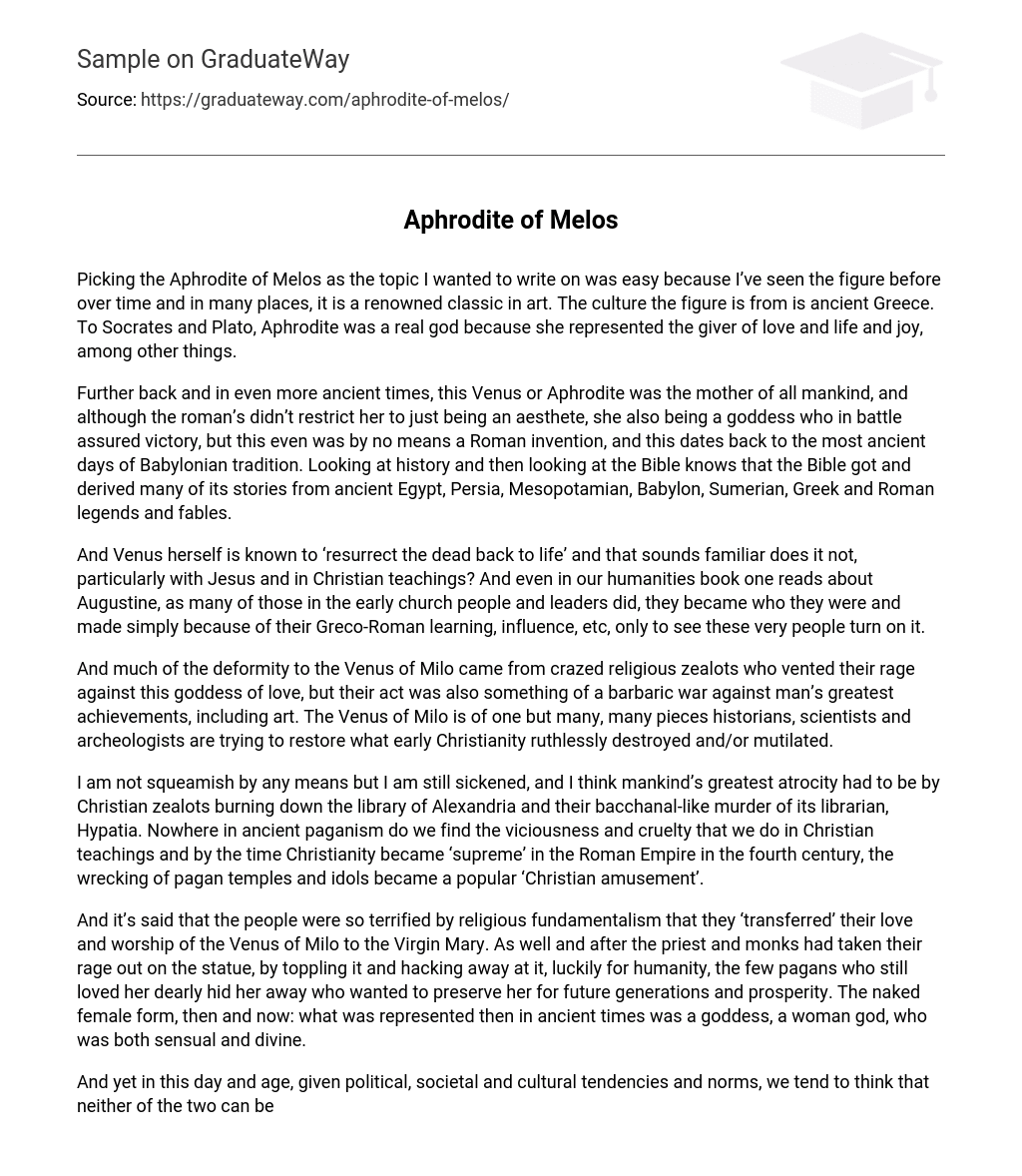Picking the Aphrodite of Melos as the topic I wanted to write on was easy because I’ve seen the figure before over time and in many places, it is a renowned classic in art. The culture the figure is from is ancient Greece. To Socrates and Plato, Aphrodite was a real god because she represented the giver of love and life and joy, among other things.
Further back and in even more ancient times, this Venus or Aphrodite was the mother of all mankind, and although the roman’s didn’t restrict her to just being an aesthete, she also being a goddess who in battle assured victory, but this even was by no means a Roman invention, and this dates back to the most ancient days of Babylonian tradition. Looking at history and then looking at the Bible knows that the Bible got and derived many of its stories from ancient Egypt, Persia, Mesopotamian, Babylon, Sumerian, Greek and Roman legends and fables.
And Venus herself is known to ‘resurrect the dead back to life’ and that sounds familiar does it not, particularly with Jesus and in Christian teachings? And even in our humanities book one reads about Augustine, as many of those in the early church people and leaders did, they became who they were and made simply because of their Greco-Roman learning, influence, etc, only to see these very people turn on it.
And much of the deformity to the Venus of Milo came from crazed religious zealots who vented their rage against this goddess of love, but their act was also something of a barbaric war against man’s greatest achievements, including art. The Venus of Milo is of one but many, many pieces historians, scientists and archeologists are trying to restore what early Christianity ruthlessly destroyed and/or mutilated.
I am not squeamish by any means but I am still sickened, and I think mankind’s greatest atrocity had to be by Christian zealots burning down the library of Alexandria and their bacchanal-like murder of its librarian, Hypatia. Nowhere in ancient paganism do we find the viciousness and cruelty that we do in Christian teachings and by the time Christianity became ‘supreme’ in the Roman Empire in the fourth century, the wrecking of pagan temples and idols became a popular ‘Christian amusement’.
And it’s said that the people were so terrified by religious fundamentalism that they ‘transferred’ their love and worship of the Venus of Milo to the Virgin Mary. As well and after the priest and monks had taken their rage out on the statue, by toppling it and hacking away at it, luckily for humanity, the few pagans who still loved her dearly hid her away who wanted to preserve her for future generations and prosperity. The naked female form, then and now: what was represented then in ancient times was a goddess, a woman god, who was both sensual and divine.
And yet in this day and age, given political, societal and cultural tendencies and norms, we tend to think that neither of the two can be similar or combined, that one can’t be both. Yet I heartily disagree with this and this is something I’m thankful that Venus, Aphrodite taught me herself and the main and one thing I learned in this Humanities project.





